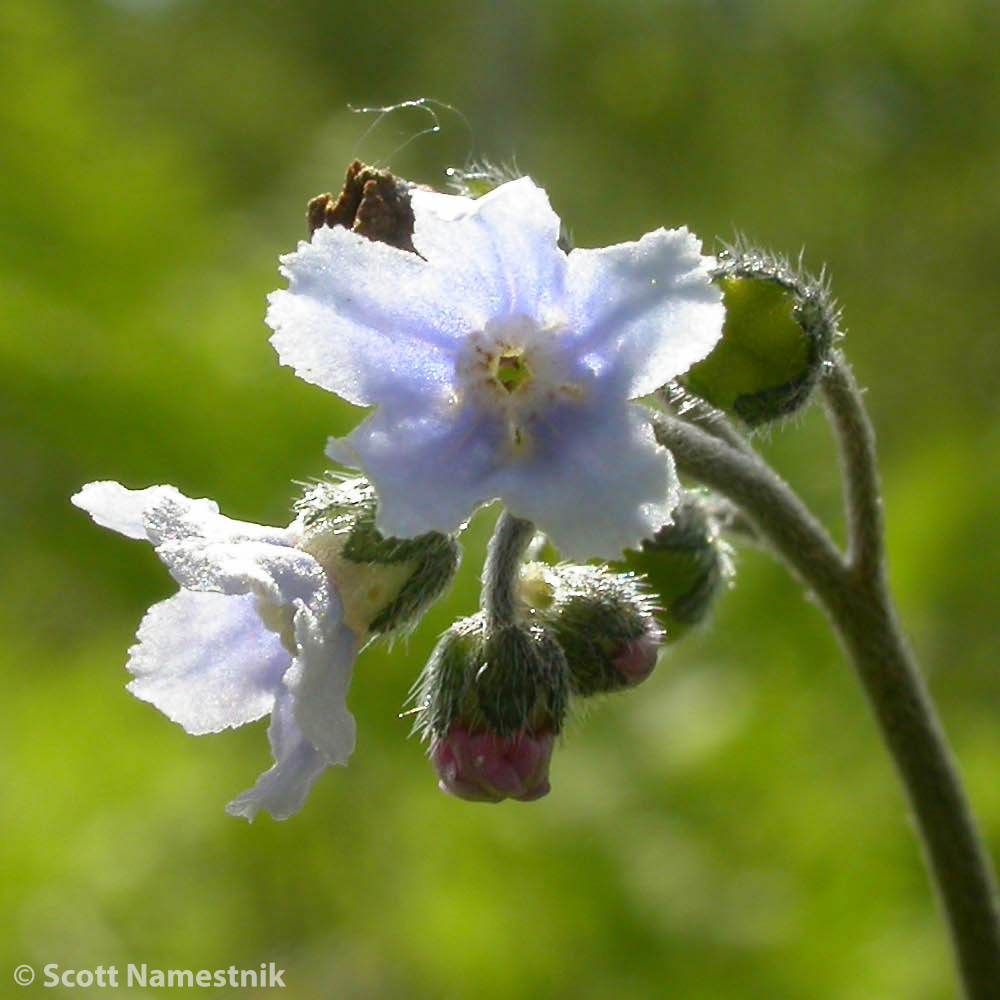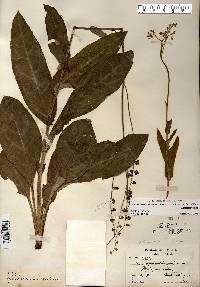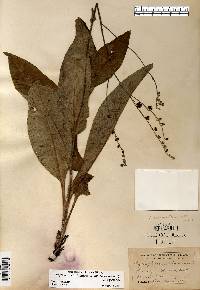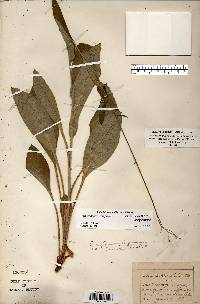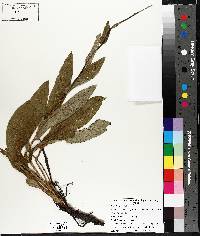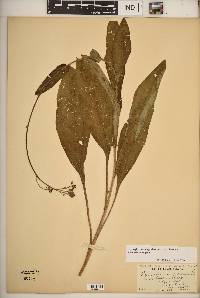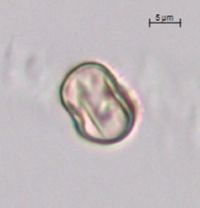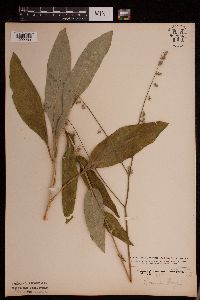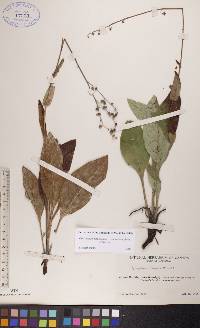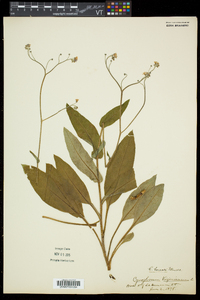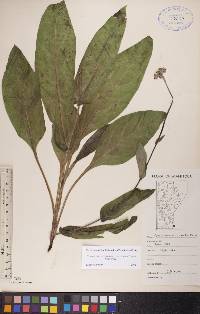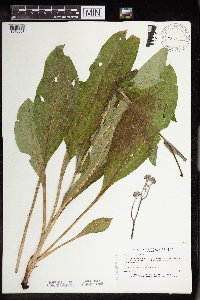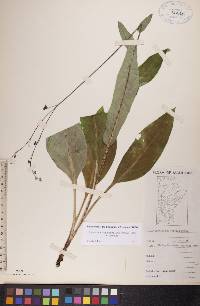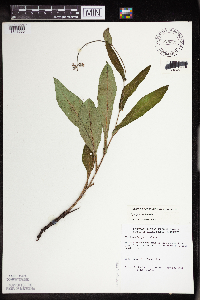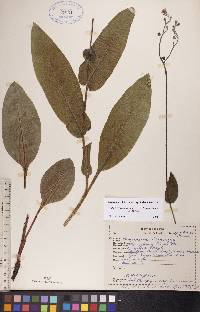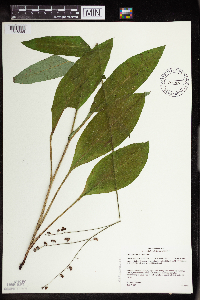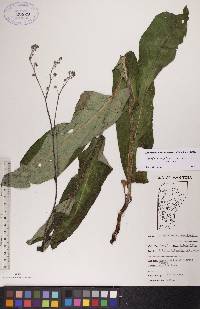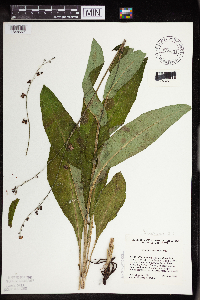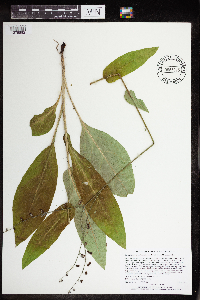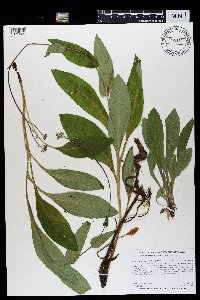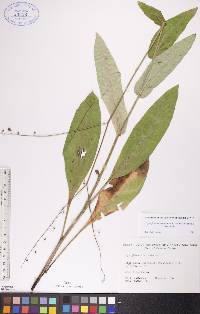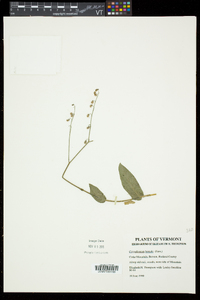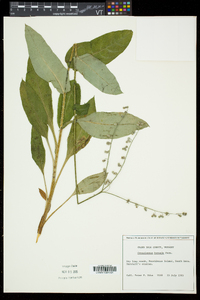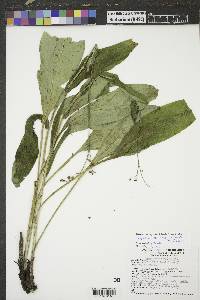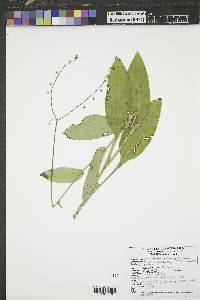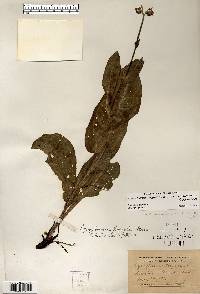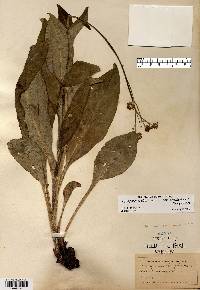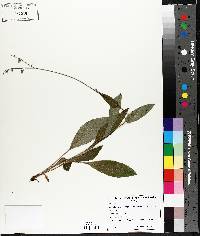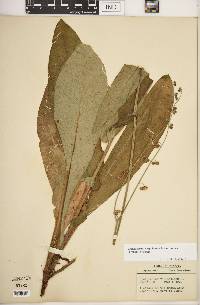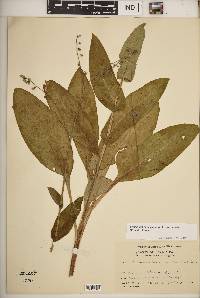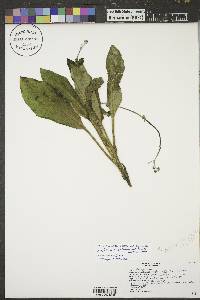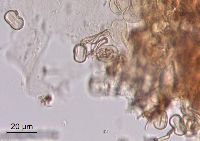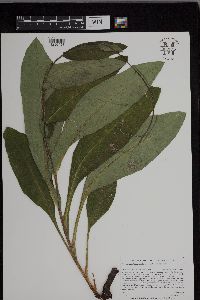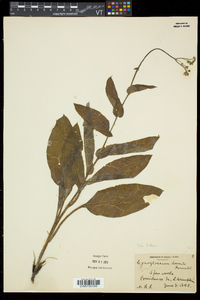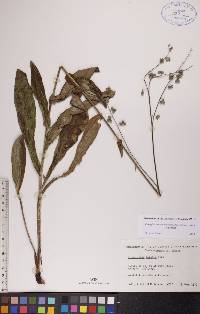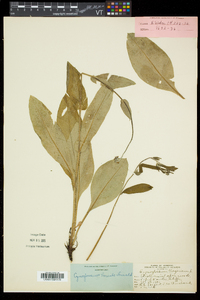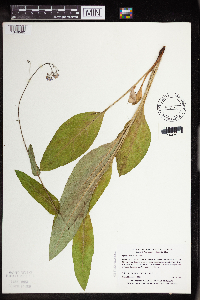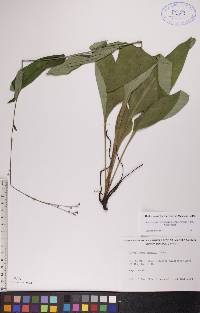Cynoglossum virginianum var. boreale
|
|
|
|
Family: Boraginaceae
Northern Wild Comfrey
|
Perennial herb 40 - 70 cm tall Stem: unbranched (except in inflorescence), erect, slender, with long straight hairs at the base, more appressed hairs above, and leafy only in the lower half. Leaves: alternate, appressed hairy, mostly non-toothed, but often wavy-edged, of two kinds: lower leaves stalked, relatively large (10 - 20 cm long, over 1 cm wide), and elliptic or oblong; upper leaves smaller (though still over 1 cm wide), and strongly clasping stem. Inflorescence: of one to four, terminal, bractless, 10 - 15 cm long (when fully mature) main branches with shorter side branches, and the individual, alternate flowers atop 0.5 - 1 cm long, recurved stalks. Flowers: blue, up to 1 cm tall, 5 - 8 mm wide, radially symmetric, short tube-like with egg-shaped spreading lobes, but center closed by arch-like raised folds (fornices) alternating petal lobes. Sepals: five, downy-hairy, 2 - 2.5 mm long (up to 3 mm long in fruit), oblong, with blunt or rounded tips. Petals: blue, five, but fused for about half their length into a short tube (about same length as sepals) with prominent, arch-like raised folds (fornices) between the bases of the separate, oblong to egg-shaped lobes. Stamens: five, attached to petal tube, but anthers not extending beyond the petal tube. Pistil: with one, deeply four-lobed, superior ovary; one style, which is shorter than the nutlets; and one stigma. Fruit: a cluster of four, 4 - 5.5 mm tall, prickly hooked-hairy, narrowly egg-shaped nutlets with rounded outer sides. The tops of the four nutlets are attached to the base of the obscure remnant style (does not extend beyond nutlets), and remain as a single cluster, which falls away from the base of the other remnant flower parts. Root: a taproot. Similar species: Cynoglossum virginianum var. boreale is very similar to the more southern typical C. virginianum, except that taxon has larger flowers (0.8 - 1.5 cm wide), longer sepals (at least 3 mm long), petal lobes that overlap, and larger nutlets (6 - 8 mm tall). Also similar is the non-native C. officinale, except that species is much more robust and leafy, it has many more inflorescence branches including those arising from axils of large leaf-like bracts, the flowers are reddish, the style is evident in fruit as a sharp projection between the nutlets, and the nutlets are larger and flat on the outer side. Flowering: May to June Habitat and ecology: Incredibly rare, and possibly extinct, found in sandy woods. Occurence in the Chicago region: native Notes: This species has not been collected or seen in the Chicago Region for over 100 years. It tends to be a more northern plant. The populations in the northern Chicago Region probably were the furthest south within the range of the taxon. This taxon has sometimes been separated as its own species as Cynoglossum boreale, but apparently there are many overlapping characters between this entity and C. virginianum where the two ranges overlap or meet. The typical C. virginianum occurs well south of the Chicago Region, only occurring in the southern half or third of Illinois and Indiana. Author: The Field Museum |

